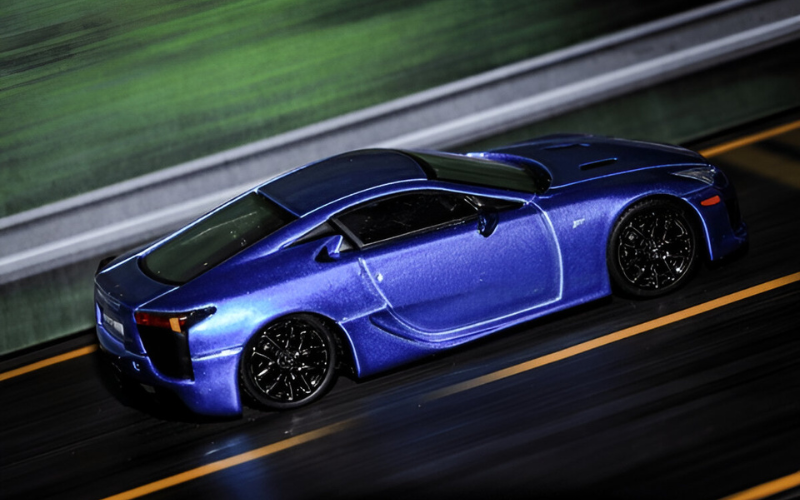Introduction
The Lexus LFA is a masterpiece of automotive engineering, renowned for its impressive top speed and remarkable performance. Released as a limited-edition supercar, the LFA features a blend of cutting-edge technology, innovative design, and a raw, thrilling driving experience. In this article, we will dive into the top speed of the Lexus LFA, exploring its powerful engine, design elements, and how it stands against other high-performance vehicles. Let’s uncover everything you need to know about the Lexus LFA’s top speed.
Overview of the Lexus LFA
The Lexus LFA is a supercar designed to push the boundaries of performance and luxury. Released in 2010, the LFA showcased Lexus’s commitment to high-performance engineering, boasting a V10 engine and a lightweight, aerodynamic design. Despite its relatively short production run of only 500 units, the LFA made a significant impact on the automotive world.
What Sets the LFA Apart?
The Lexus LFA is unlike any other vehicle in the Lexus lineup. It’s built with a focus on performance, combining advanced materials like carbon fiber and titanium with the precision of Japanese engineering. The car’s most striking feature is its 4.8-liter V10 engine, which provides an exhilarating driving experience. The LFA’s unique exhaust note, its carbon fiber body, and its striking design all contribute to its identity as a supercar.
The car’s lightweight structure, aggressive styling, and high-performance components make it stand out from other luxury cars in its class. Unlike many of its competitors, the LFA was designed to be a driver-focused machine, providing an experience that blends speed with refinement.
The Power Behind the Lexus LFA Top Speed
At the heart of the Lexus LFA’s exhilarating performance is its engine. This car is powered by a naturally aspirated 4.8-liter V10 engine, capable of producing 552 horsepower at 8,700 RPM. The engine is paired with a six-speed automated manual transmission, ensuring quick gear shifts and maximum performance.
Engine Specifications and Power Output
The Lexus LFA’s V10 engine is engineered to provide exceptional power and responsiveness. It produces 354 lb-ft of torque, which contributes to the car’s aggressive acceleration. The V10’s high-revving nature allows it to reach impressive speeds, with its redline sitting at 9,000 RPM. This engine is paired with a tuned exhaust system that produces a distinctive and awe-inspiring sound, adding to the overall experience.
In addition to the engine’s performance capabilities, the Lexus LFA is equipped with a state-of-the-art suspension system, ensuring that its power is transferred to the road efficiently. The combination of these features allows the LFA to reach its top speed with precision and stability.
Lexus LFA Top Speed – How Fast Can It Go?
The Lexus LFA is built for speed, and its top speed is a testament to the engineering that went into creating this supercar. The official top speed of the LFA is 202 mph (325 km/h), which places it among the fastest production cars of its time.
Official Top Speed Numbers
The LFA’s 202 mph top speed is achieved thanks to its powerful V10 engine, aerodynamic design, and lightweight structure. The car can accelerate from 0 to 60 mph in just 3.6 seconds, showcasing its remarkable acceleration capabilities. In terms of pure speed, the LFA competes with some of the world’s top supercars, offering a thrilling experience for those behind the wheel.
However, the LFA’s top speed is not just about numbers; it’s about how the car handles at high speeds. The vehicle maintains stability, even at its maximum velocity, thanks to its meticulously tuned suspension and aerodynamic enhancements. This makes the LFA not only fast but also incredibly balanced at high speeds, ensuring a safe and controlled driving experience.
Factors Influencing the Lexus LFA’s Speed
Several factors contribute to the LFA’s impressive top speed. From its aerodynamics to the careful weight distribution, each aspect of the car plays a role in achieving high-performance numbers.
Aerodynamics and Design Impact on Speed
Aerodynamics is a critical factor in any high-performance vehicle, and the Lexus LFA excels in this area. The car’s sleek, low-slung design helps minimize drag, allowing it to cut through the air with ease. Additionally, the use of lightweight materials, such as carbon fiber in the body and interior components, contributes to the car’s ability to achieve high speeds without sacrificing control or stability.
The LFA’s front and rear spoilers are designed to enhance downforce, ensuring that the car remains stable at high speeds. The vehicle’s body shape and precise engineering allow it to maintain optimal airflow, reducing air resistance and improving overall speed and handling.
Weight and Balance Considerations
Another key aspect of the Lexus LFA’s performance is its balanced weight distribution. The car’s chassis is designed with a near-perfect 50:50 weight distribution, which ensures that the vehicle remains stable during high-speed maneuvers. The lightweight nature of the car, thanks to the extensive use of carbon fiber and other advanced materials, helps keep the overall weight down, contributing to its impressive acceleration and top speed.
The combination of these elements allows the Lexus LFA to remain agile and responsive, even at its maximum speed, making it a true high-performance machine.
How Does the LFA Compare to Other Supercars in Terms of Top Speed?
When comparing the Lexus LFA to other supercars, its top speed places it on par with some of the most legendary vehicles in automotive history. However, it’s important to understand how it stacks up against its competitors.
Comparing the LFA to Competitors
The Lexus LFA competes with supercars like the Ferrari 430 Scuderia, the Porsche 911 GT3, and the Lamborghini Gallardo. In terms of raw top speed, the LFA holds its own, with its 202 mph top speed. However, when comparing acceleration, handling, and overall driving experience, the LFA offers a unique blend of refinement and performance that sets it apart.
The Ferrari 430 Scuderia, for instance, has a top speed of around 198 mph, while the Porsche 911 GT3 reaches a top speed of approximately 193 mph. While these cars are slightly slower in terms of top speed, they each offer different performance characteristics that appeal to driving enthusiasts.
The Lamborghini Gallardo, another competitor, has a similar top speed, but the LFA stands out with its smoother, more refined driving experience. It’s important to note that while the LFA’s top speed is competitive, its unique V10 engine and handling capabilities make it a standout in the supercar category.
The LFA Legacy and Impact on Lexus’s Performance Cars
Though the LFA was produced in limited numbers, its impact on Lexus’s performance cars cannot be overstated. It set a new standard for what Lexus could achieve in the world of high-performance vehicles.
How the LFA Paved the Way for Future Lexus Sports Cars
The Lexus LFA was not just a one-off supercar; it marked the beginning of a new era for the brand. Following the LFA, Lexus has continued to develop performance vehicles that reflect the high standards set by this remarkable car. The LFA’s influence can be seen in vehicles like the Lexus LC500 and the upcoming Lexus LFA successor, which are designed with similar attention to detail and performance.
The LFA demonstrated that Lexus could compete with the best in the world when it comes to high-performance vehicles, and it laid the groundwork for the brand’s continued commitment to producing exceptional sports cars.
Conclusion
The Lexus LFA remains one of the most iconic supercars in automotive history, offering incredible top-speed performance and a driving experience that sets it apart from other high-end vehicles. With its 202 mph top speed, lightweight structure, and sophisticated design, the LFA continues to hold a special place in the hearts of car enthusiasts. Its legacy has influenced Lexus’s approach to performance cars, ensuring that its impact will be felt for years to come.
FAQ
Q1: What is the Lexus LFA’s top speed?
The Lexus LFA has a top speed of 202 mph (325 km/h), making it one of the fastest production cars of its time.
Q2: How fast is the Lexus LFA compared to other supercars?
With a top speed of 202 mph, the Lexus LFA competes closely with supercars like the Ferrari 430 Scuderia and Lamborghini Gallardo, offering an excellent balance of speed and handling.
Q3: Is the Lexus LFA still considered one of the fastest cars?
While newer supercars have surpassed its top speed, the Lexus LFA remains a highly regarded vehicle for its overall performance, refinement, and engineering.
Q4: How much horsepower does the Lexus LFA produce?
The Lexus LFA’s 4.8-liter V10 engine produces 552 horsepower, contributing to its exceptional acceleration and top speed.

